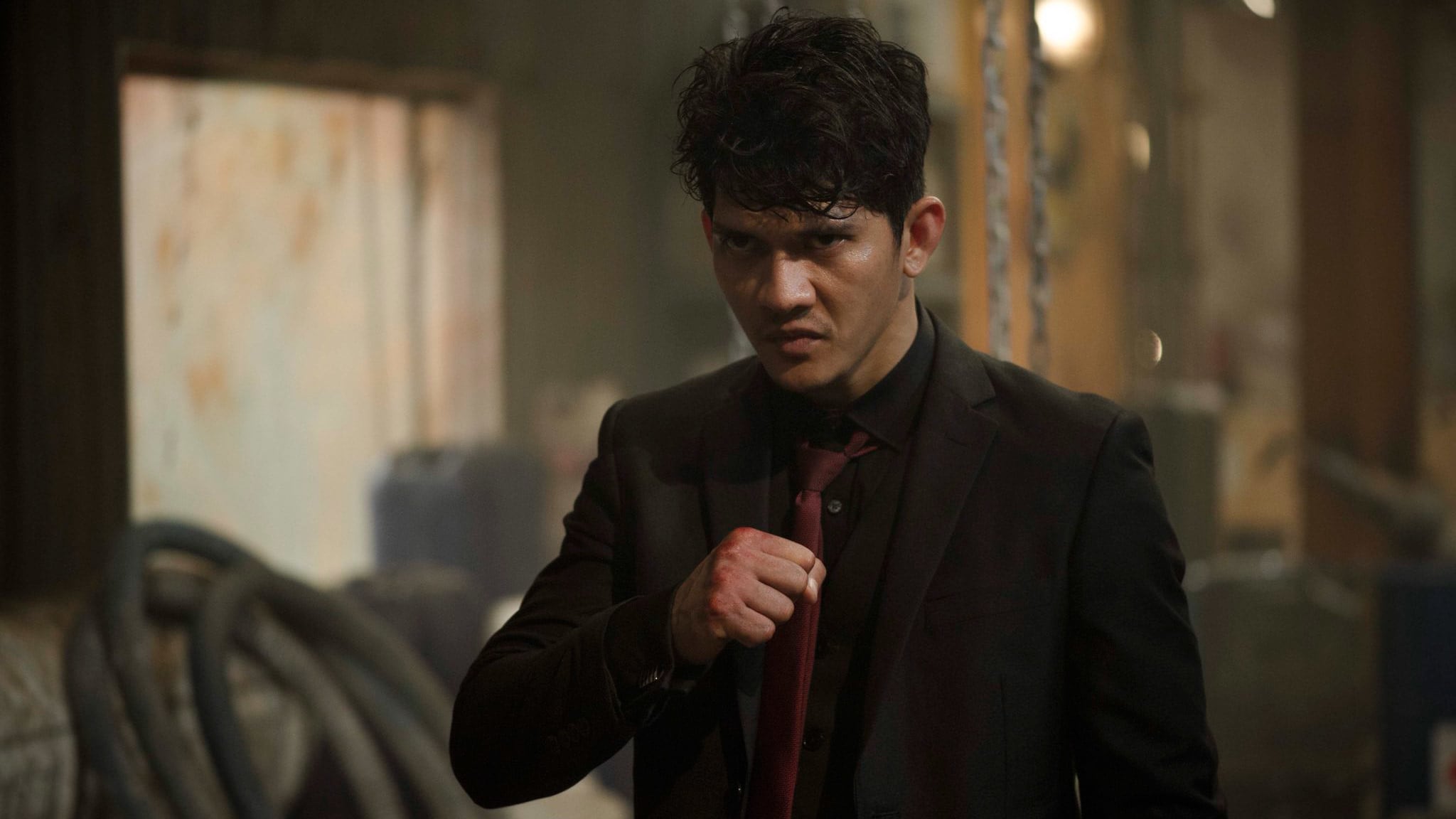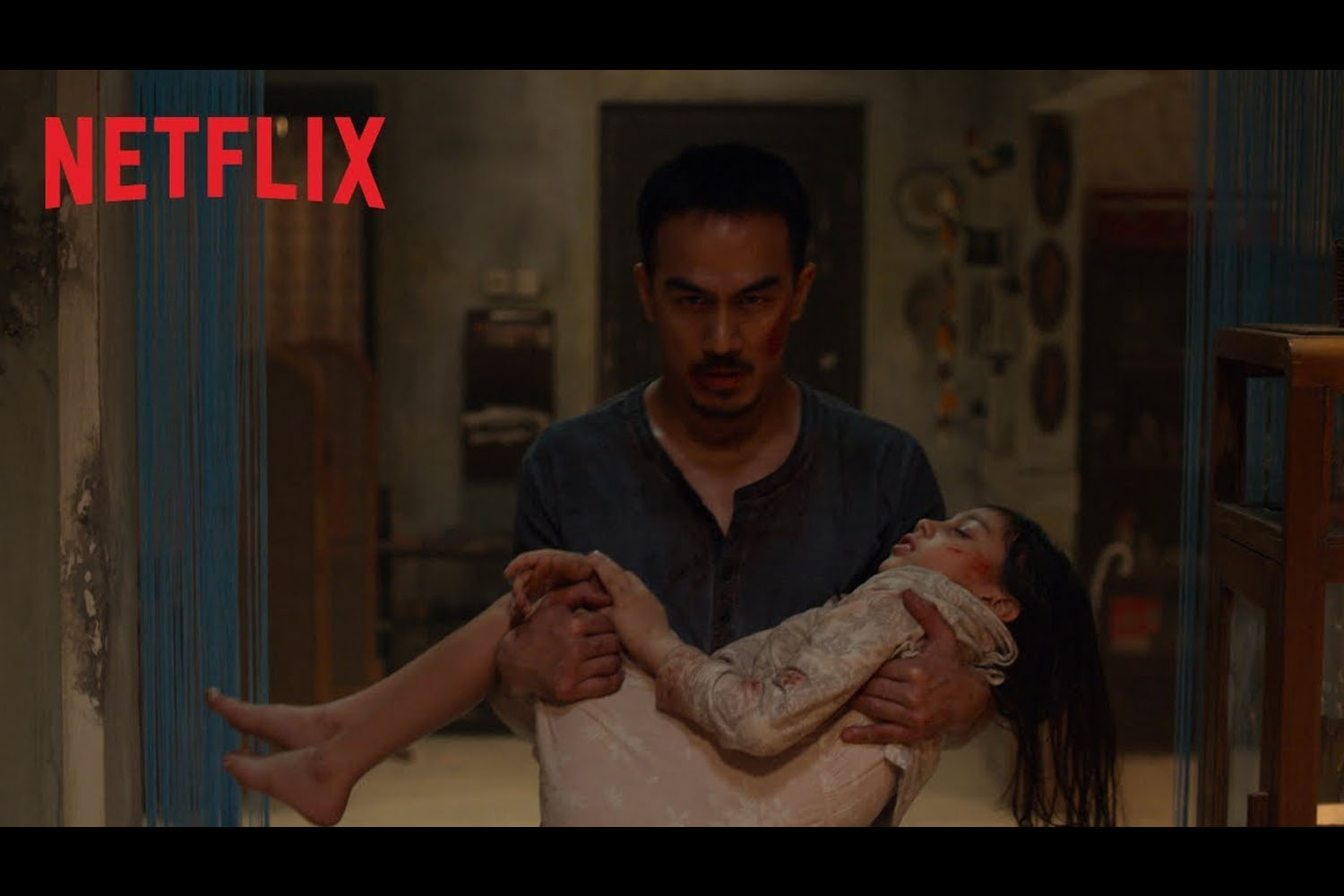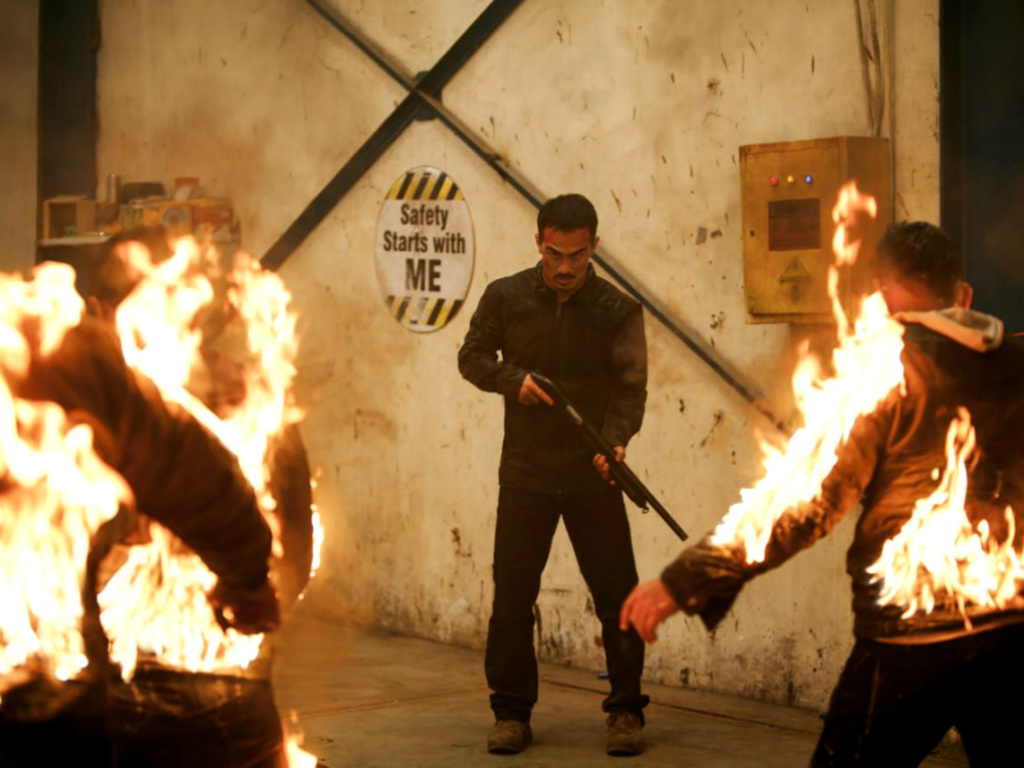
It’s been four years since The Raid Redemption turned modern action movies on their head, rejecting the commonly accepted post-Bourne precedent of quick cutting shaky-cam cinematography. Instead it used actual martial artists to craft long unbroken shots of mayhem, calling to mind the outrageous stunt-work of Jackie Chan’s brand of Hong Kong action flicks, but combined this with a frantic fight for survival. The Night Comes For Us handily falls into this camp, another Indonesian action film that prioritizes highly choreographed, intricate stunt work over all other exploits. But it’s more than just vaguely philosophically aligned with this movement, as The Night Comes For Us’ director Timo Tjahjanto previously collaborated with the director of The Raid Gareth Evans. Additionally that movie’s star, Iko Uwais, is this film’s choreographer, and also plays one of the lead villains.

But where The Night Comes For Us deviates from its contemporaries is in its sheer carnage, and the extremes of its violence. Combatants are stabbed, shot, and eviscerated in a multitude of inconceivable ways, bodies reduced to chunks of meat and broken bones. Tjahjanto’s background as a maker of horror film’s is readily apparent, with the mayhem devolving into grindhouse levels of gore. The combination of intricate stunt work and ultraviolence is somewhat unique, the sheer power of these individuals coming across through the outrageous harm they inflict on the human body. Good guys and bad guys alike suffer horrific damage and keep crushing skulls, at times essentially reduced to shambling zombies that are somehow still able to obliterate their enemies. The various fighters are unique in their attack methods, from utilizing the distinctive Indonesian martial art of Silat, to specializing in the use of Kukri, to a deadly Bola, the variety in their weapons of choice leads to a unique texture in each of the brawls. It’s warriors are outrageous comic book character’s come to life, and the ensuing barrage of one-liners and set-pieces are a delight to behold. Unfortunately the violence is so gratuitous at points that things arguably degenerate into outright sadism. In particular, at around its midpoint, the slaughter of several protagonists came across to me as somewhat mean spirited, the black-hearted nihilism of Tjahjanto’s background in horror shining through in an overbearing fashion.
Luckily right as the film is reaches height of its blood lust, it also injects much needed humanity into its protagonist, contextualizing his actions through a series of flashbacks. The story begins as a young girl witnesses her entire town being massacred by the vicious Southern East Asian Triad, a punishment for a few individuals that skimped out on the crime syndicate. Ito, the head of the detachment, finally decides that enough is enough and saves the girl from execution. But the cost of this moral decision is that he and the girl are marked for death, and the Triad musters its full wrath to make an example out of the two. While the film’s focus is undeniably on its fight scenes, it does a good job of portraying the gaps in the violence. It presents the events that led to Ito joining the Triad in the first place, the backstory of his old gang, the rise of his friend turned foe, all to better articulate his turn from an executioner to someone pursuing redemption.

In particular, his relationship with his rival Arian is well established, the paths of the two diverging in a tragic fashion. The eventual reveal of their backstory gives the violent turn of affairs weight, transforming what would have been just a sequence of well-delivered action scenes into something with a degree of emotional heft. Characters are sent off in gloriously dramatic fashion, clever music selections accompanying the blazes of glory. While the trope of a veteran criminal breaking-good is quite common in this type of film, Joe Taslim brings a combination of world-weariness and outright brutalism to his performance as Ito. His laments over the violence and crimes he’s committed are the essential fuel this redemption story needs to allow us to root for its protagonist, but his connection to his past is maintained through seeing his skill as a butcher. Its impressive that despite the cartoonish levels of gore, the character’s convictions come across as genuine.

Still, the main selling point of this type of film is the fights, and although the previously described blood and viscera will be too excessive for some, the setups and tools employed in the brawls are nothing if not creative. While at times blows the camera captures look a little slow, or overly postured, there is an undeniable degree of ingenuity in how the set design, types of combatants, framing, and choreography all come together to make for singular set-pieces. At one point a horde of low level goons stream into an apartment, essentially a legion of knife wielding zombies, and our protagonists holding them off while enduring inhuman levels of harm. Another fight breaks out in the inside of an armed police car, the close quarters combat combining with fire arms, grenades, and stun batons to create a harrowing death-fight. A heroine faces off against two female assassins, bookended by the quip of the year and an outrageous display of intestine-spilling insanity.

These events combine to create a fever pitch of graceful brutality, tied together by a surprisingly enjoyable plot, and some slick natural wipes that fluidly transition between the various battles happening in parallel. The Night Comes For Us‘ occasionally nauseating extremes will undeniably be outputting for some, but the combination of the ingenuity in its action setups, the sheer skill of its martial artists, and its competent dramatic beats make for a genre entry that exemplifies good action film-making.
Rating: 3.5/5
The Night Comes For Us is available now on Netflix streaming






